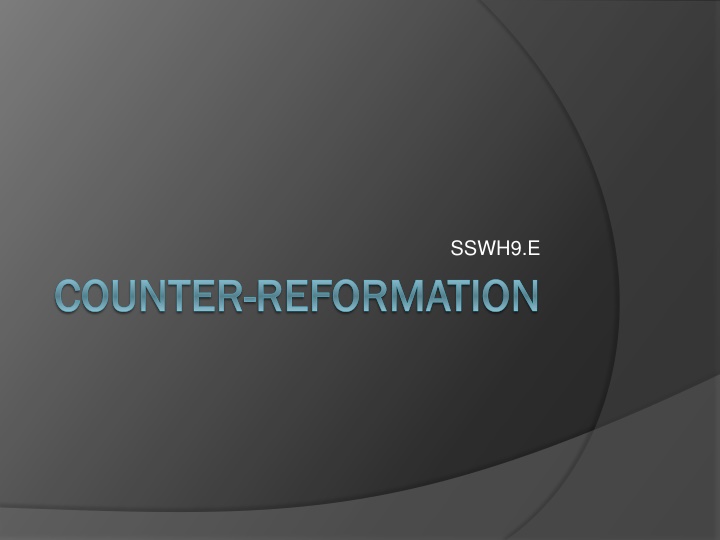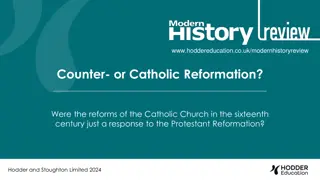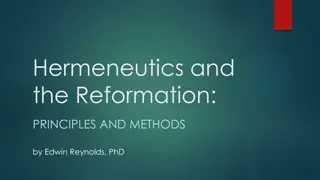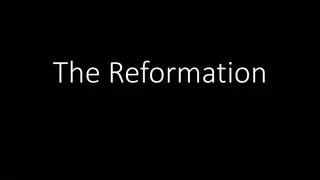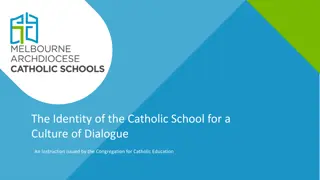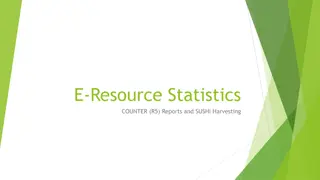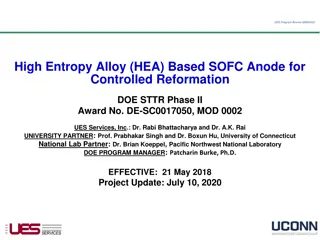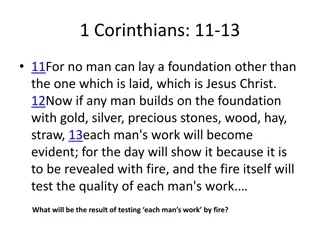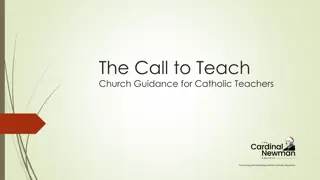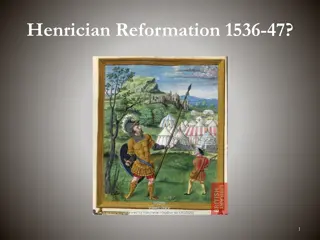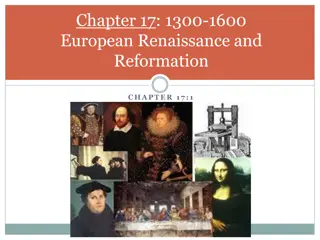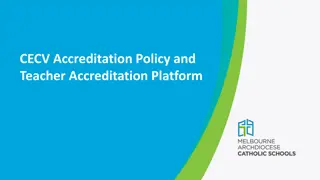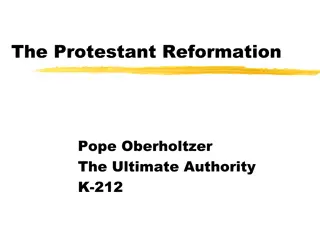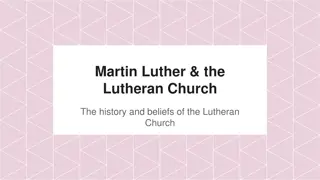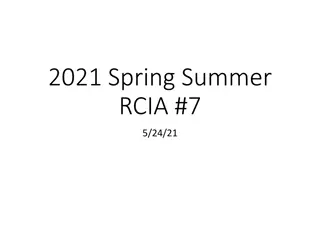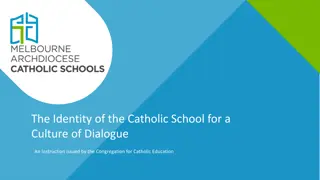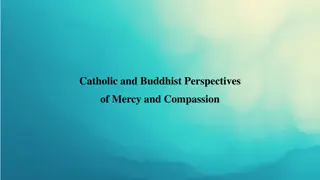Reformation and Counter-Reformation in the Catholic Church
Catholic rules during the Middle Ages granted immense power to the Pope, sparking dissent that led to the Protestant Reformation. The Counter-Reformation was the Catholic response to Protestant criticisms, leading to the Council of Trent in the mid-16th century to reaffirm Catholic doctrines and practices.
Download Presentation

Please find below an Image/Link to download the presentation.
The content on the website is provided AS IS for your information and personal use only. It may not be sold, licensed, or shared on other websites without obtaining consent from the author.If you encounter any issues during the download, it is possible that the publisher has removed the file from their server.
You are allowed to download the files provided on this website for personal or commercial use, subject to the condition that they are used lawfully. All files are the property of their respective owners.
The content on the website is provided AS IS for your information and personal use only. It may not be sold, licensed, or shared on other websites without obtaining consent from the author.
E N D
Presentation Transcript
SSWH9.E COUNTER COUNTER- -REFORMATION REFORMATION
Catholic Rules During the Middle Ages That the Roman pontiff alone can with right be called universal. That of the Pope alone all princes shall kiss the feet. That his [the Pope s] name alone shall be spoken in the churches. That it may be permitted to him to depose emperors. That he himself may be judged by no one. That he may absolve subjects from their fealty to wicked men.
If you were living during that time How would those rules make you feel? What would you think about the Pope and the Church?
Reason for Reforming the Catholic Church The Protestant Reformation caused many people to doubt what the Roman Catholic Church had been teaching. The Counter-Reformation was a Catholic reaction to the ideas of early Protestants.
What did the Protestants say? Protestants spoke out against Papal authority, Catholic Biblical interpretation, and corruption in church leadership. As we read over some of Luther s writing imagine what people switching over to the beliefs of the Protestants meant for the Catholic Church. How dangerous were these ideas that Luther and the Protestants were preaching?
The Romanists, with great skill, have built three walls around themselves behind which they have so far avoided any sort of reform; and this has been the cause of terrible corruption throughout all Christendom. First, when pressed by temporal (governmental) authority, they have made decrees and said that the temporal power has no jurisdiction over them since spiritual authority is above the temporal authority. Second, when the attempt is made to correct them from Scriptures, they raise the objection that the interpretation of Scriptures is the right of the Pope alone. Third, if anyone threatens to convene a church council to look into the matter, they answer with the fable that no one can call a church council except the Pope. In this way they have slyly stolen from us our three rods, that they may go unpunished, and have hidden themselves within the safe stronghold of these three walls, that they may practice all the mischievousness and wickedness which we now see.
The Council of Trent This Catholic Council met from 1545 1563. The Council declared that every existing Catholic doctrine and practice was spiritually beneficial.
Results from the Council of Trent Condemned Protestant doctrines. Reformed Catholic Church leadership, placed firm restrictions on the sale of indulgences, and stricter moral standards for church leaders. Proclaimed that the Catholic church s interpretation of the Bible was unquestionable. Anyone who questioned it was labeled a heretic. Catholic church tradition was proclaimed to have as much authority as Scripture.
Saint Ignatius of Loyola and The Jesuits Ignatius first occupation in life was war. He was a knight, but after being wounded in 1521 he converted to Catholicism. While he was recovering from his wound he decided he would lead the rest of his life in service to God instead of men.
Saint Ignatius and the Jesuits Eventually Ignatius assembled a group of followers named the Jesuits. He was appointed as the group s first Superior General. The order was characterized by strict spiritual training, tough discipline, and extreme loyalty to the Pope.
In the Words of Saint Ignatius That we may be altogether of the same mind and in conformity with the Church herself, if she shall have defined anything to be black which appears to our eyes to be white, we ought in like manner to pronounce it to be black. For we must undoubtingly believe, that the Spirit of our Lord Jesus Christ, and the Spirit of the Orthodox Church His Spouse, by which Spirit we are governed and directed to Salvation, is the same
The Impact of the Jesuits Jesuits often served as personal priests and confessors for princes and kings. Jesuit cells in England hatched plots that came close to deposing Queen Elizabeth. In France they called for the assassination of Henry III because he was lukewarm, and Henry IV because he was protestant. The evidence of Jesuit efforts is still obvious. The following universities were all established by Jesuit missionaries: Georgetown University, Loyola University, Fordham University, Boston College.
The Politics of the Reformations The Pope s authority was on the decline across Europe. Some political rulers took sides not based on their religious beliefs but rather on what would increase their power.
The Results of Reformation and Counter-Reformation The Protestant and the Catholics both clarified what they believed. By the last half of the 16thcentury, extreme believers on both sides were trying to convert the other by force.
